

Table of contents
- Does your granite slab covering need a substructure?
- Lay granite slabs
- Grout granite slabs
- How to grout:
- Do you prefer a mortar bed and mortar joints?
- Advantages of granite slabs outdoors
- Granite slabs in combination with the granite paving stones
- granite pavement
- granite slabs
- Important Purchasing Information
- Conclusion
Granite is an exclusive building material that should not be laid without detailed installation instructions. However, you can easily do the most recommended open laying of granite slabs yourself, even with a substructure:
Does your granite slab covering need a substructure?
1. If a surface made of granite slabs is heavily loaded, e.g. B. is to be driven over by motor vehicles, this surface also needs a resilient substructure:
- At least 25 cm of gravel-sand mixture (grain size 0/32) must be applied under the surface as a load-bearing base layer for vehicles
- Clear the area to be paved of soil to the required depth
- You have to excavate 29 to 31 cm depending on the bedding + thickness of the slabs (at least 3 cm) for the base layer that can be driven on
- A slope must be created so that rainwater can run off
- A gradient of 2.5 percent is usually used
- The gravel-sand mixture is now distributed evenly over this
- Compact this layer with a vibrator
- The bedding, 4 to 6 cm of crushed sand or fine chippings, is placed on top of this base layer.
- This leveling layer is distributed horizontally with a long aluminum batten
- This is called pulling, previously laid pullers or ropes on the sides serve as an aid
- This layer is also compacted and refilled
- Always keep the desired gradient in mind
2. If the granite slabs are only used by pedestrians, about 15 cm of base course is sufficient. For example, for granite terrace slabs, which are best laid loosely on a bed of gravel or sand. Here, the high weight of the granite slabs ensures that the slabs are in a secure position, and the base layer is made of sand or gravel ensures good water drainage, which is absolutely necessary so that the granite slabs are not damaged in the long term suffer. How to proceed:
- The earth subsoil is excavated at a depth of around twenty centimetres
- Here, too, a slight gradient is introduced for the water drainage
- Cover the area with fleece if the bottom of the excavated pit is damp or loose
- Fill the area with the first layer of 5 cm gravel
- Compact this layer, you need a vibrator for this
- Fill in the second and final layer of fine chippings
- This layer is compressed again
- If the height of the bed is correct (measure with a plumb line and spirit level), the following is deducted:
- Use the squeegee to straighten the finish coat (taking into account the slope)
- The alternative is laying on slab supports, which is based on the respective manufacturer's instructions
3. If you want to lay granite slabs on concrete, you may come across the view that this is not possible. That's not entirely true, but the prerequisite is that the concrete surface is intact and has the required slope. However, the gradient is usually present outdoors, so you can lay the granite slabs on the concrete. It should first be painted with a special primer, then a formwork frame that is at least 10 cm high is nailed around the concrete surface, and then the bedding can be installed. If the frame is later to be replaced by a border, this must be water-permeable.
Lay granite slabs
Now you can start to lay the granite slabs, if necessary. According to the manufacturer's instructions for a specific association, the following points apply to actually every installation:
- On surfaces, start laying in a corner
- If there is to be a path, the curbs are usually laid first
- Place the panels and first align each individual panel horizontally across the direction of the slope
- For each next panel, the surface is leveled with a rubber mallet until the edges are even
- The width of the joint should be exactly the same for every panel. Spacers or frequent checking with a jointing trowel will help
- In the meantime, you should always check whether the entire surface is laid horizontally and evenly
Grout granite slabs
Opinions on grouting granite slabs used to be divided:
- The "lords of the stones" in the granite factory recommended open or sand-filled joints at least 0.5 cm wide, which permanently protects the stone from chipped edges
- The horticultural businesses recommended seamless butt joints, which would prevent weed growth
- Grout manufacturers have always advised against open joints (as there is a high risk of the joints being washed out) in order to sell grout.
Today, even in public areas, care is taken to design as many green joints as possible. Anyone who has ever been in the mountains also knows that a joint installation will certainly not prevent any plant from growing. And the flushed joints, there are those with storm surges, certainly with hurricanes too, but with average German rain.
Open joints in the gravel-sand bed allow infiltration, and everyone has heard that infiltration is a good thing. The alternative would not only concern grouting, only granite slabs laid on a bed of mortar would be used grout with grout, resulting in a closed surface from which rainwater drains runs. There are many arguments against such a closed surface and for infiltration, see next paragraph. One can say that the dispute has now been clearly decided: Granite slabs outdoors are laid on a bed of grit or sand and equipped with unsealed joints. These joints should be filled with sand or fine grit, this supports the even water drainage, because the Slightly capillary effect of the filling slows down the water seeping through the joints and thus under- and rinsing prevented. The joints are filled with sand or fine grit; Fine sand 0 – 2 mm, diabase crushed sand, basalt powder, quartz sand or crushed lime sand. You know the colors of normal sand, basalt sand results in dark joints, quartz and lime sand results in light to white joints.
How to grout:
- Basalt flour is a special case, it is swept dry into the joints and brushed in
- Otherwise: filling compound in an even layer of approx. Spread 5 mm on the granite slabs and rub in
- Slurry: Soak well with a fine jet from the garden hose.
- Sweep the wet filling into the joints with a broom
- Use a brush to trace all joints without applying pressure
- Sweep in the filling again slowly and carefully up to the level of the board
- The surface is now allowed to dry, excess joint sand is removed with the broom (and collected)
- The jointed granite slabs are evenly shaken off over the entire surface
- Then you can clean the surface:
- The panel surfaces are sprayed with a strong jet of water
- Diagonally and never in such a way that you catch a joint lengthways until all sand residues have been completely removed
- After two to four weeks, grouting is done, i.e. wet filling compound is brushed in again
- Now the edges can be attached to the sides
- This will e.g. B. made with mortar, which is applied with a trowel at an angle to the edge of the pavement (so-called back support)
- You can then cover the incline with edging stones, which gives a very neat edge
If you e.g. B. If you are laying a terrace surface with granite slabs, you would then have to consider whether you should seal or coat the surfaces. impregnation, but that is a separate, not entirely simple topic.
Do you prefer a mortar bed and mortar joints?

The installation just shown is a classic way of laying granite slabs. Today or even increasingly standard again; Granite slabs in a loose bed react elastically to static and dynamic loads, so temperature stresses can be reduced well. The surface also remains permeable to water, a great advantage over a non-draining installation, even if over time a little joint filler will "disappear" and even if green could settle in the joints (this is even often realized today sown). This "unbound laying" is opposed to "bound laying", in which the slab bed and joints consist of cement mortar with additives. Such a bound installation is always being considered because it seems to be so neat, but it is quite complicated: You have to apply a base layer that is particularly resistant to deformation, which is still very little elongation or Withstands tension, this is only recommended in exceptional cases.
There are also many good arguments for unbound laying:
- We are constantly building, the natural areas are constantly being sealed to waterproof surfaces
- When it rains down on these areas, this rainwater no longer trickles through layers of earth and arrives cleaned in the groundwater
- Instead, it is fed directly into the sewage system without any natural groundwater formation
- Too much rainwater is routed from the sewage system into the nearest body of water, which is heavily polluted by untreated rainwater
- In addition, this rainwater is missing in the groundwater, in many regions the groundwater levels are already falling
- Only 0.3% of the approximately 1.5 billion cubic meters of water on our planet is usable drinking water
- Even in water-rich Germany, clean drinking water is not available without limits
- Good reasons to make any area capable of infiltration where this is possible, the urban climate is also improved as a result
- Infiltration also saves you money because you pay for the water that drains from your property into the sewage system
- Also for clean rainwater, in Berlin e.g. B. a rainwater fee of €1.804 per m² drained area
Advantages of granite slabs outdoors
Still hesitating, granite slabs are so expensive? Here are a few arguments for the beautiful covering:
- Natural stone is a very old and very durable covering that shows the same color for decades
- Granite comes in many different colors that can be laid in a wide variety of combinations
- Depending on the surface, granite slabs can appear playful and lively, calm and straightforward, very modern - everything is possible
- The aesthetic value of a granite paving is certainly higher than that of a concrete paving, and it is also easier to maintain:
- Granite is resistant to abrasion, easy to clean, resistant to stains, embers, cigarettes
- At some point, aging granite slabs unfolded their very own charm
- Granite slabs are offered in surfaces that always remain non-slip and easy to grip, such as brushed, flamed or bush-hammered
- While concrete blocks are inevitably slippery even with dew or some green growth
The natural stone is more expensive when bought new than concrete stone, you have to reckon with at least €50 per square meter for the minimum thickness of 3 cm that is usually required. But you don't necessarily have to buy the granite slabs new, in the trade with historical building materials granite slabs are also offered, often at the same price per square meter as concrete pavers or even cheaper.
Granite slabs in combination with the granite paving stones
If you are still considering which pavement it should be - here is a classification of granite slabs and granite paving. Granite is a natural stone, granite slabs are one of the many forms in which natural stone pavers are made. Depending on the size of the stones, the natural stone paving has certain designations:
granite pavement
There are many variations of granite for paving, here are the common and frequently used paving stones that are offered in addition to the granite slabs made of granite:
- Mosaic pavement: Smallest pavement size, is machine made today, common sizes 4 cm (3/5), 5 cm (4/6), 6 cm (5/7) and 7 cm (6/8)
- Small patches: Square stones, except for dimensional tolerances, usual sizes 8 cm (7/9), 8.5 cm (7/10), 9 cm (8/10), 9.5 cm (8/11) and 10 cm (9 /11)
- Cobblestones (colloquially cobblestones): large-format natural stone cubes with edge lengths of 14 cm (13/15), 16 cm (15/17) and 18 cm (17/19)
- The numbers in brackets indicate the dimensions by which the edge lengths may vary, natural stone cannot be broken exactly
granite slabs

With the granite slabs you have already chosen a very special natural stone pavement for which very special regulations apply. Here is an overview, also to differentiate between granite slabs and granite paving:
- "Slabs made of natural stone for outdoor areas - requirements and test methods" are regulated in DIN EN 1341:2013-03 (paving stones, natural stone, outdoor areas: DIN EN 1342)
- Granite slabs are natural stone slabs "where the nominal width exceeds twice the thickness".
- If this ratio is not reached, the slabs are called "paving slabs".
- The paving stone is a "natural stone for paving, the length or width not exceeding twice the thickness and length not exceeding twice the width"
- Standard sizes for granite slabs: 30 x 30, 30 x 40, 40 x 40, 40 x 60 and 60 x 60 cm, the larger, the faster to lay
Important Purchasing Information
There are a few other things to consider when shopping for granite slabs:
- If you are buying the granite new, ask for stone that is guaranteed to be child labor free
- The self-commitments/certificates of Asian natural stone exporters should be viewed rather critically
- Internationally recognized certificates such as Xertifix or Fair Stone offer more security
- Certificates from UNICEF or UNESCO are fake, both organizations do not award natural stone seals
- The following information should be included with the purchase:
- Designation: trade name, petrographic name, typical colour, place of origin (may be given using GPS coordinates)
- The petrographic name is the scientific name of the rock
- In addition, DIN EN 1341 requires a test of water absorption, bulk density and open porosity. In the case of chemical treatment, the type must be specified
- Dimensional tolerances in several directions must be shown: Permissible deviations in panel dimensions, diagonals and thickness, permissible deviations in the flatness of visible surfaces and edges
- Further information relates to the test of the freeze-thaw cycle, the flexural strength, the abrasion resistance and u. u the grip
- A data sheet with the tolerances according to DIN EN 1341 can be found at granitvasertnaturstein.de/wp-content/uploads/2013/04/Granitplatten-Masstoleranten.pdf
- Natural stone slabs are DIN EN 1341 offered with various, precisely defined surfaces:
- Finely machined: Surface machined with artificial stone, on which there is a maximum distance of 1 mm between the apex and the lowest point (e.g. B. sawn, sanded).
- Roughly machined: Surface machined with stone, on which there is a distance of more than 1 mm between the apex and the lowest point (e.g. B. bush-hammered, flamed, blasted)
Conclusion
Unbound laying of granite slabs results in durable and at the same time shape-variable floor coverings. The production of the beautiful and durable panel surfaces is easy for do-it-yourselfers to manage, the relatively high price when buying a new one pays for itself over time.
 garden editorial
garden editorial I write about everything that interests me in my garden.
Learn more about gardening of all kinds
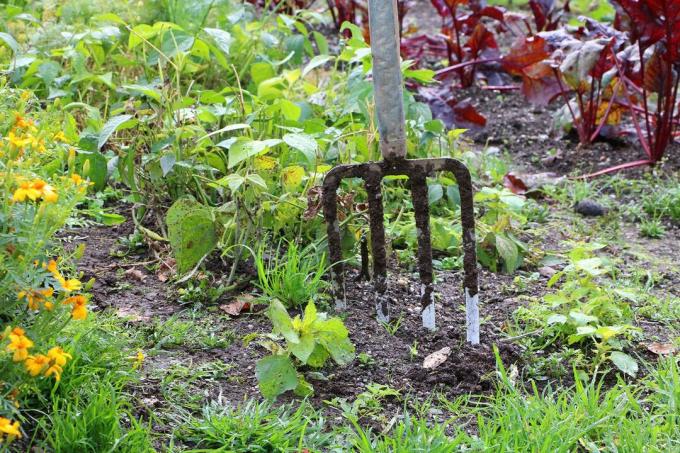
Laying out a garden – you should observe these guidelines
A well-kept garden is a real eye-catcher that enhances the house and property even more. When buying a new property or for seasonal renewal, the garden is designed with many new ideas and concepts. This can be quite expensive if not planned properly. Our article wants to show you how to create your new […]
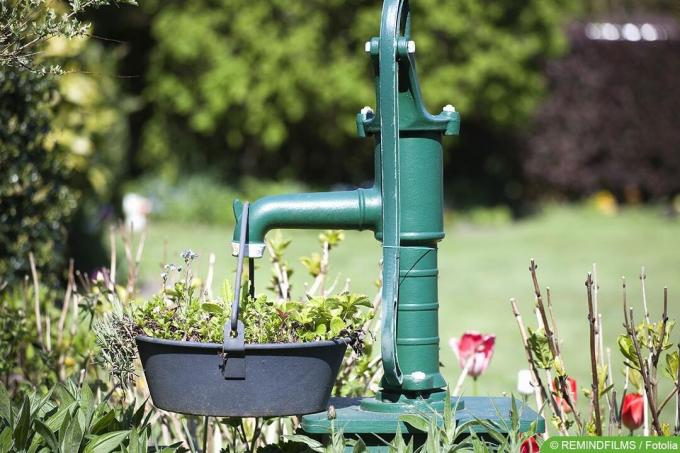
Find water veins: At what depth does groundwater come?
A well on your own property must be connected to the groundwater. It is not always clear where this is located. Luckily, there are several methods that you can use to reliably track down a "water vein" to take advantage of the water source.
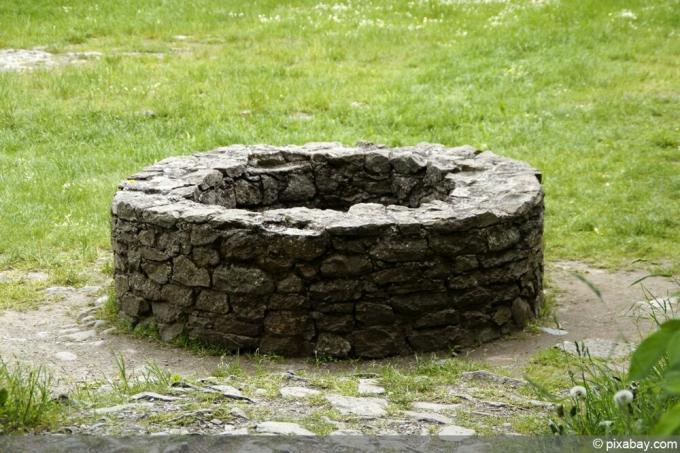
Build your own dowsing rod DIY instructions
Dowsing rods have been a working method for finding water and other things in our environment for centuries. With little effort, you too can easily make your own dowsing rod - with our instructions.
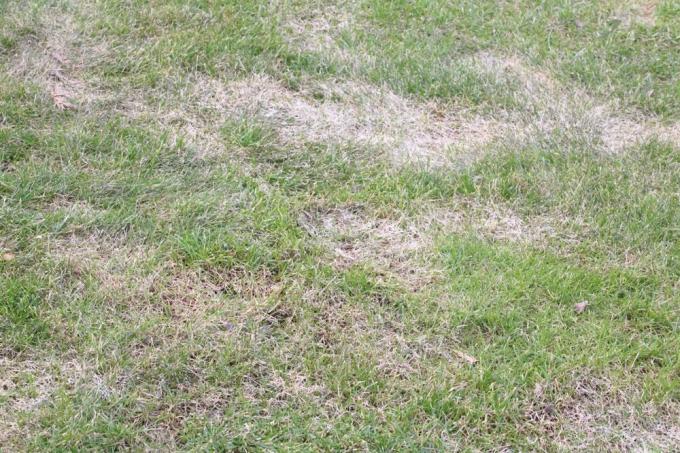
Lawn pavers: how does lawn repair work?
Bald spots or gaps in the lawn are a thorn in the side of many lawn owners. However, overseeding is considered to be tedious work. Relief should Provide lawn pavers that combine many work steps in one.
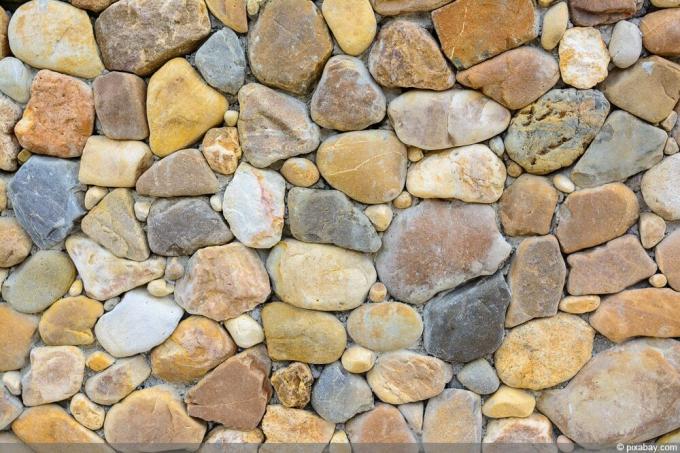
Build a Frisian wall yourself | Costs for a Frisian wall
The Friesenwall is used to separate gardens and flower beds from neighboring properties. It is aesthetic and offers a living space. The costs you will incur depend on the material you have chosen. Choosing DIY will save you money on labor.
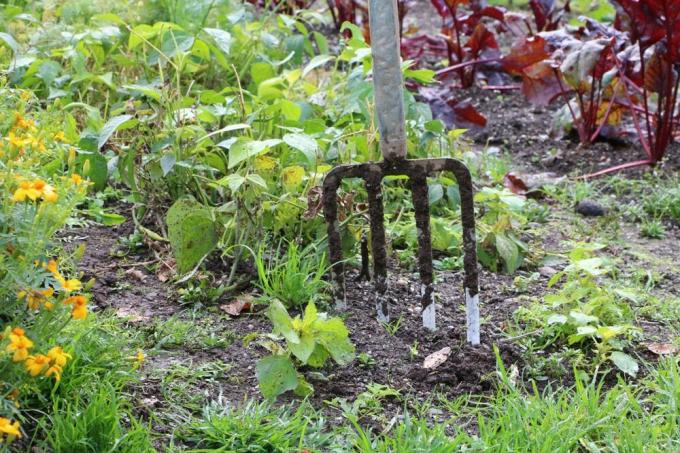
Improve your income with gardening - is that possible?
If you put a lot of time, energy and love into your garden and this then also brings the corresponding successes in the form of a rich harvest shows, you can get the idea of whether you can improve your income with your gardening. We show what you should consider, what pitfalls there are and what opportunities you can offer.
